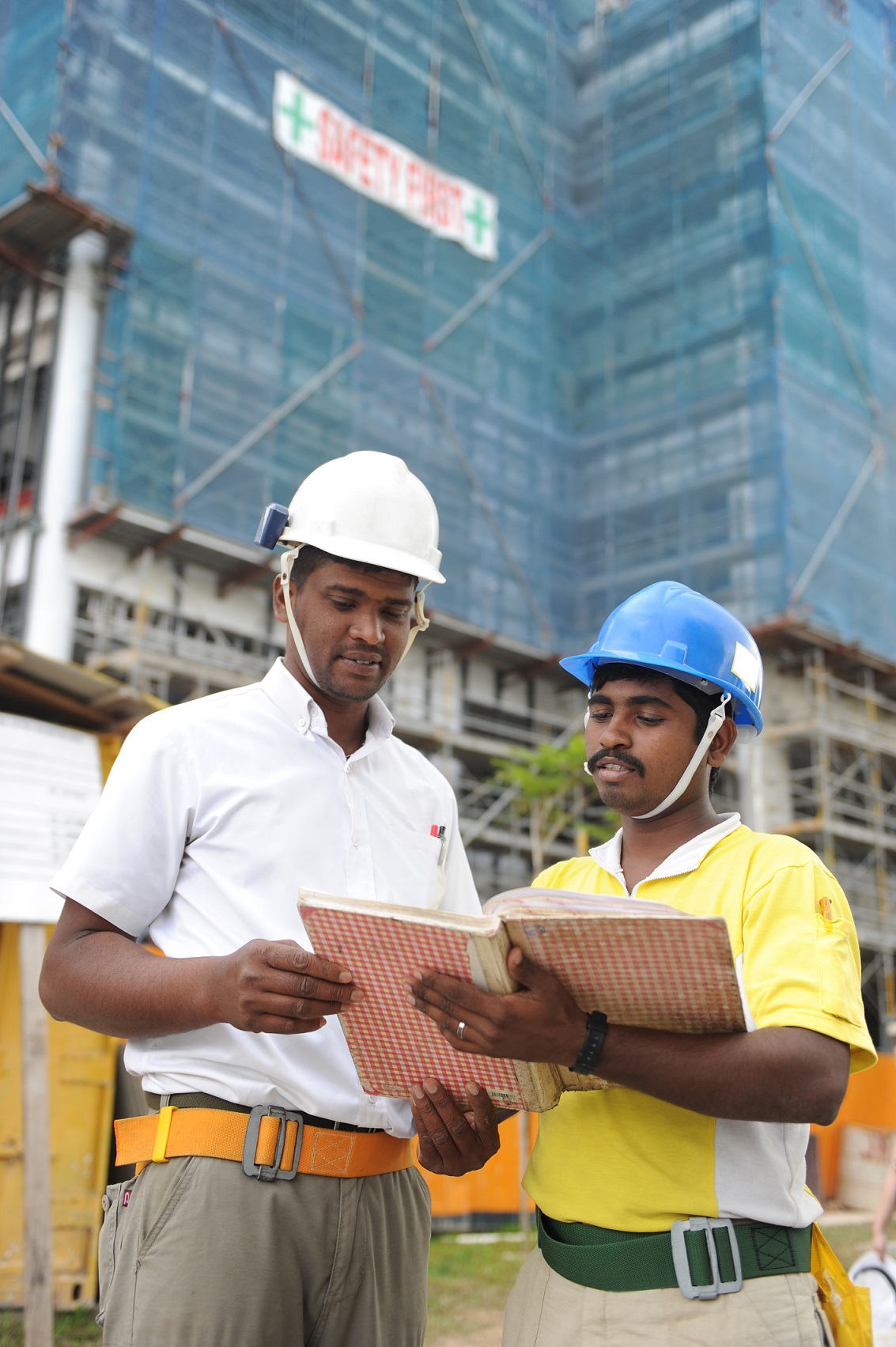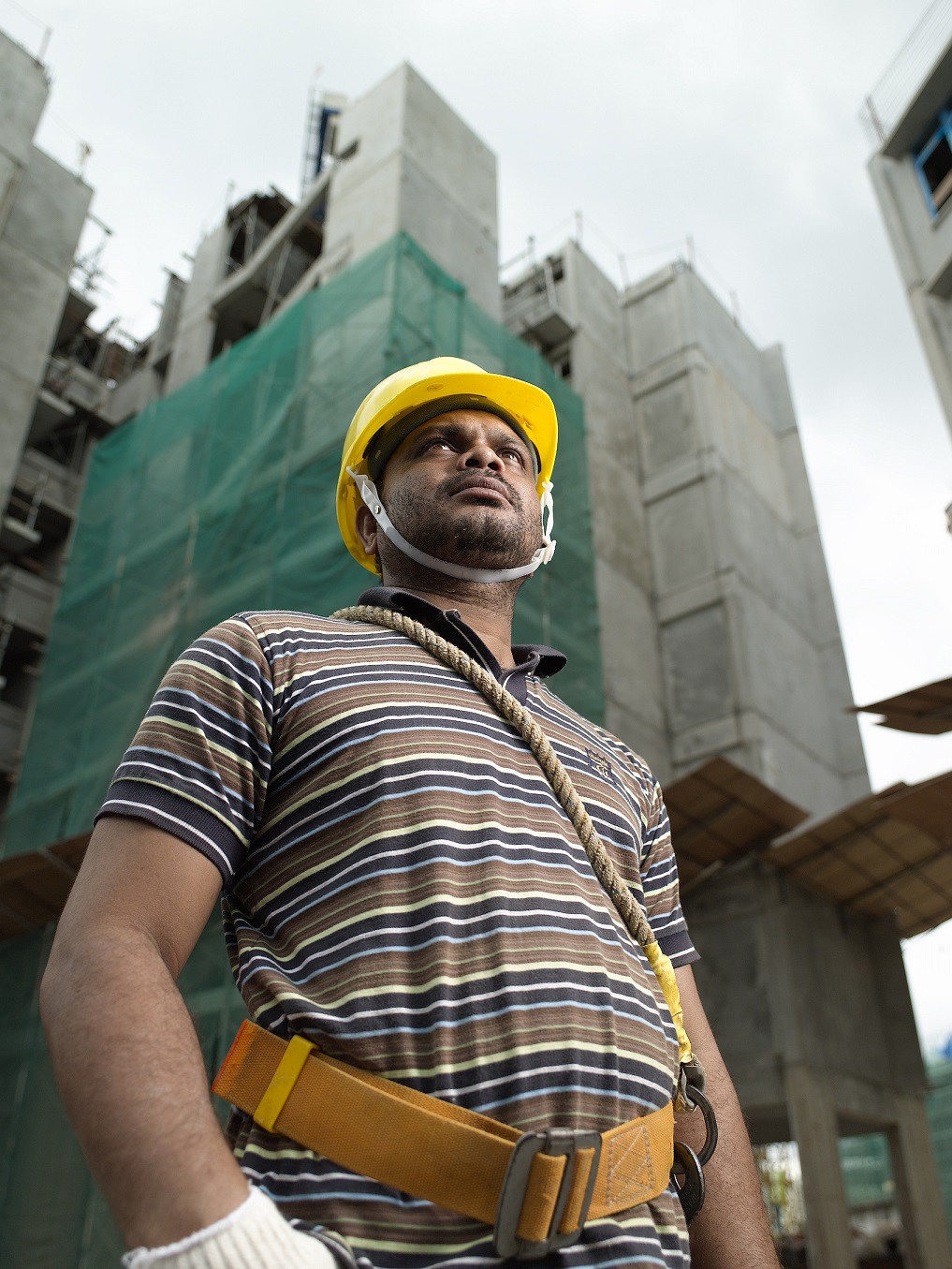Singapore’s Workplace Safety and Health (WSH) journey started in the late 1950s. Although the initial journey faced many challenges, the WSH landscape grew by leaps and bounds through the decades.
In the mid 1980s, Singapore started building its key infrastructures. The 1990s saw industries becoming increasingly diversified with technologically-advanced sectors; at the same time, the country started facing increased WSH risks. At that time, the legislation in place to protect workers was the Factories Act, which only mandated prescriptive WSH requirements for factories, worksites and shipyards. Workers employed in non-industrial sectors were not covered by the act.
Between 1992 and 1994, four fires and explosions occurred, claiming 23 lives. This prompted new mandatory requirements for the implementation and audit of WSH management systems for high-risk factories, worksites and shipyards.
However, four other major accidents a decade later, in 2004, including the collapse of a Mass Rapid Transit construction worksite at Nicoll Highway, prompted Singapore to implement a different national strategy in addressing WSH issues and challenges.
In 2005, the WSH Framework was redrawn based on three key principles:
1) reducing risk at source,
2) greater industry ownership, and
3) higher penalties for poor safety management.
In March 2006, a less prescriptive and more performance-based WSH Act was launched, replacing the prescriptive and restrictive Factories Act.
CONSTRUCTION—A HIGH RISK SECTOR
 The construction industry has constantly remained as one of the riskier sectors in Singapore, accounting for the highest number of work-related fatalities. Compared with other nations, Singapore’s construction industry is fragmented and has a diverse workforce. Mainly made up of foreign workers with different cultures and spoken languages, it is always a challenge communicating with the workers and upholding consistent good WSH practices at worksites.
The construction industry has constantly remained as one of the riskier sectors in Singapore, accounting for the highest number of work-related fatalities. Compared with other nations, Singapore’s construction industry is fragmented and has a diverse workforce. Mainly made up of foreign workers with different cultures and spoken languages, it is always a challenge communicating with the workers and upholding consistent good WSH practices at worksites.
Foreign workers are also transient; going back to their home country after their contract ends. This means that knowledge retention is limited, and training is constantly needed for new workers. In addition, faced with an ageing population in the local workforce and a shortage of manpower, it is an uphill task to retain older but experienced workers within the industry as personal health issues start to surface.
A MOMENTOUS SHIFT
Specific action plans to improve Singapore’s WSH standards were laid out, and one of the key initiatives to reduce the workplace fatality rate was the implementation of the Design for Safety (DfS) Regulations.
Design and planning is an essential component in all construction works. However, developers and designers tend to leave the identification and resolution of WSH risks in building construction and maintenance to the builders and building operators.
Risk management is typically performed when the project is already ongoing, and risk management practitioners may invariably find the range of available risk control measures limited and constrained by the work environment, as the risks are already built-in. Additional resources might have to be expended to resolve WSH issues, which could have been prevented if proper considerations were made at the design and planning stage.
Singapore resonated with the belief that relying on downstream regulations and enforcement activities were not sufficient to achieve a breakthrough in WSH performance in the construction sector. In 1998, the Singapore Contractors Association Ltd collaborated with the Ministry of Manpower to organise a study mission to UK to learn about the UK’s Construction (Design Management) (CDM) Regulations, which was introduced in the country in 1995 to improve construction safety.
Thereafter, referenced from the UK’s CDM Regulations, the Guidelines on DfS in Buildings and Structures was launched in 2008 to assist stakeholders on the process of design safety. DfS training was introduced for professionals and designers to understand the DfS concept and implementation of the DfS design review process. DfS was not mandated but promoted on a voluntary basis. Nevertheless, by 2012, public developers—e.g. Housing Development Board (HDB) and Land Transport Authority (LTA)—committed and pledged their support to incorporate DfS in their new projects.
With the DfS guidelines, companies now perform systematic risk management upstream, facilitated by a DfS coordinator to identify and remove WSH risks upfront in their designs or reduce associated risks through mitigation and controls. Any residual risks or controls are clearly documented in the DfS register and communicated to the builders and facilities management. Builders and facilities management personnel face significantly reduced risks to manage downstream.
This shift towards upstream risk management complements efforts to improve downstream productivity in construction. In addition to reducing and eliminating WSH risks, the DfS process can also be used to identify opportunities for the use of new construction methods and improved productivity.
A NEW WAY FORWARD
 To achieve widespread adoption of DfS and enable significant progress in the construction sector’s WSH performance, the Singapore government decided to mandate DfS and require developers and designers to ensure buildings and structures are safe to build, maintain and demolish.
To achieve widespread adoption of DfS and enable significant progress in the construction sector’s WSH performance, the Singapore government decided to mandate DfS and require developers and designers to ensure buildings and structures are safe to build, maintain and demolish.
The Workplace Safety and Health (DfS) Regulations were enacted in July 2015 and came into effect on 1 August 2016. The regulations place the responsibility for the safety and health of workers on those who create the risks, achieve sustainable WSH improvements through better coordination among stakeholders to manage the WSH risks upstream at the design and planning phase, and improve the planning and effective management of safety and health risks throughout the construction project.
Following the enactment, more than 3,000 practitioners from the industry were engaged through various platforms to gain in-depth understanding on DfS. Resources such as professional courseware, videos and infographics were developed, and a newly revised DfS Guidelines was launched to better prepare stakeholders for their obligations, as stipulated in the regulations. The DfS coordinator programme was also enhanced to a DfS Professional programme, where developers can appoint a DfS professional for assistance in convening the DfS review meeting and preparing the DfS register. To date, there are nearly 800 DfS professionals in the industry.
The Institute of Engineers Singapore (IES) and several other stakeholders also launched a DfS library to help companies to implement DfS. The library hosts contributions from various organisations on architectural, mechanical and electrical designs, which would help companies identify common potential hazards downstream and provide recommendations in eliminating these risks at the design stage.
The implementation of DfS was an arduous effort. Groups of stakeholders had worked together to assess and analyse the hazards and risks of projects and how these risks could be eliminated or mitigated. Following the implementation of the DfS regulations, the construction industry was quick to adopt and build their capacities. Stakeholders were supportive of the regulations, and senior management took personal interests in the DfS review meetings to ensure that all parties benefit from this effort. Major developers, such as the HDB, LTA, JTC Corporation, CapitaLand Group, City Developments Ltd and Frasers Centrepoint Ltd, had started implementing DfS in many of their new projects. Although the full effect of the regulations can only be realised three to five years later, Singapore’s construction industry has started to realise the benefits of DfS.
Other plans were also laid out by the WSH (Construction and Landscape) Committee to further advance WSH outcomes through tripartite efforts, capability building and sharing of best practices. These include implementing a mandatory Construction Safety Audit Scoring System to measure effectiveness in WSH management at worksites, the review and enhancement of the Construction Safety Orientation Course, the publication of a construction accident case study booklet, as well as the WSH Construction Leadership Summit 2015 where major construction stakeholder groups came together to recommit themselves to improve WSH outcomes through six key areas—leadership, procurement, training, WSH culture, WSH practices and DfS.
Singapore WSH subsequently achieved her lowest-ever fatality rate of 1.2 per 100,000 workers in 2017, with the construction industry achieving the lowest-ever fatality rate of 2.6 per 100,000 workers.
THE NEXT LAP
 Singapore’s WSH journey does not end here. At the Singapore WSH Conference 2018 held on 29 and 30 August 2018, John Ng, chairman of the WSH 2028 Tripartite Strategy Committee, shared the preliminary plans for the WSH 2028 Strategy. He laid out new WSH outcomes: pervasive adoption of ‘Vision Zero’ where all injuries and ill-health can be prevented, workplaces to foster health and safety in a holistic and integrated manner, and a sustained workplace fatality rate of less than one per 100,000 workers. An International Advisory Panel comprising renowned international WSH practitioners and experts supported the preliminary plans put forth and believed that through the WSH 2028 Strategy, Singapore will be able to reduce and sustain its workplace fatal injury rate at less than one fatality per 100,000 workers.
Singapore’s WSH journey does not end here. At the Singapore WSH Conference 2018 held on 29 and 30 August 2018, John Ng, chairman of the WSH 2028 Tripartite Strategy Committee, shared the preliminary plans for the WSH 2028 Strategy. He laid out new WSH outcomes: pervasive adoption of ‘Vision Zero’ where all injuries and ill-health can be prevented, workplaces to foster health and safety in a holistic and integrated manner, and a sustained workplace fatality rate of less than one per 100,000 workers. An International Advisory Panel comprising renowned international WSH practitioners and experts supported the preliminary plans put forth and believed that through the WSH 2028 Strategy, Singapore will be able to reduce and sustain its workplace fatal injury rate at less than one fatality per 100,000 workers.
As a world-class economy, there is much to be done for Singapore to achieve these WSH outcomes and to provide workers with one of the safest and healthiest workplaces in the world. With regulatory authorities, industry associations, professional institutions, various stakeholders and unions continuing the journey to work as one with ‘Vision Zero’ in mind, attaining the WSH 2028 goal is possible. — Construction+ Online
 YAM AH MEE
YAM AH MEE
Chairman, WSH Council (Construction and Landscape) Committee
Yam was appointed as chairman of WSH Council (Construction and Landscape) Committee in April 2016, where he oversees the sector-specific initiatives for construction and landscape industries.
In his 37 years of experience in the public sector, he held various portfolios and senior leadership positions including Chief Executive Director, People’s Association; Chief Executive, Land Transport Authority; Deputy Secretary, Ministry of Transport; Dean/CEO, Civil Service College; and Chief of Staff, Republic of Singapore Air Force.
He is also managing director of Sembcorp Design and Construction Pte Ltd.
Yam graduated from the University of New South Wales with a first class Engineering degree on a Singapore Armed Forces Overseas Training Award and obtained a Master’s in Business Administration degree from National University of Singapore. He also obtained a Master’s of Public Administration degree from Harvard University, Kennedy School of Government, where he was conferred the Lucius N. Littauer Fellow Award.

 Malaysia
Malaysia Hong Kong
Hong Kong Indonesia
Indonesia Tiếng Việt
Tiếng Việt ประเทศไทย
ประเทศไทย









